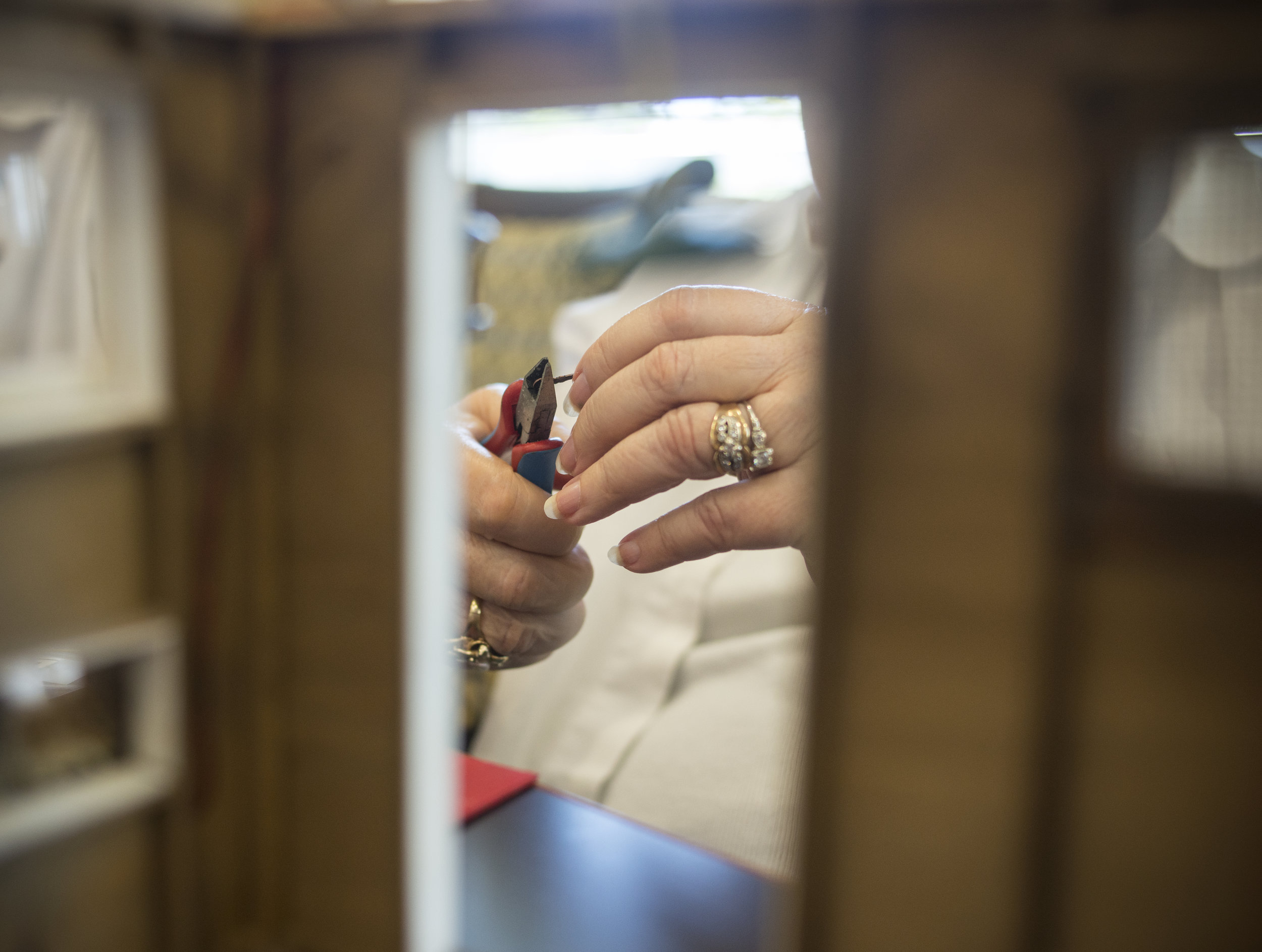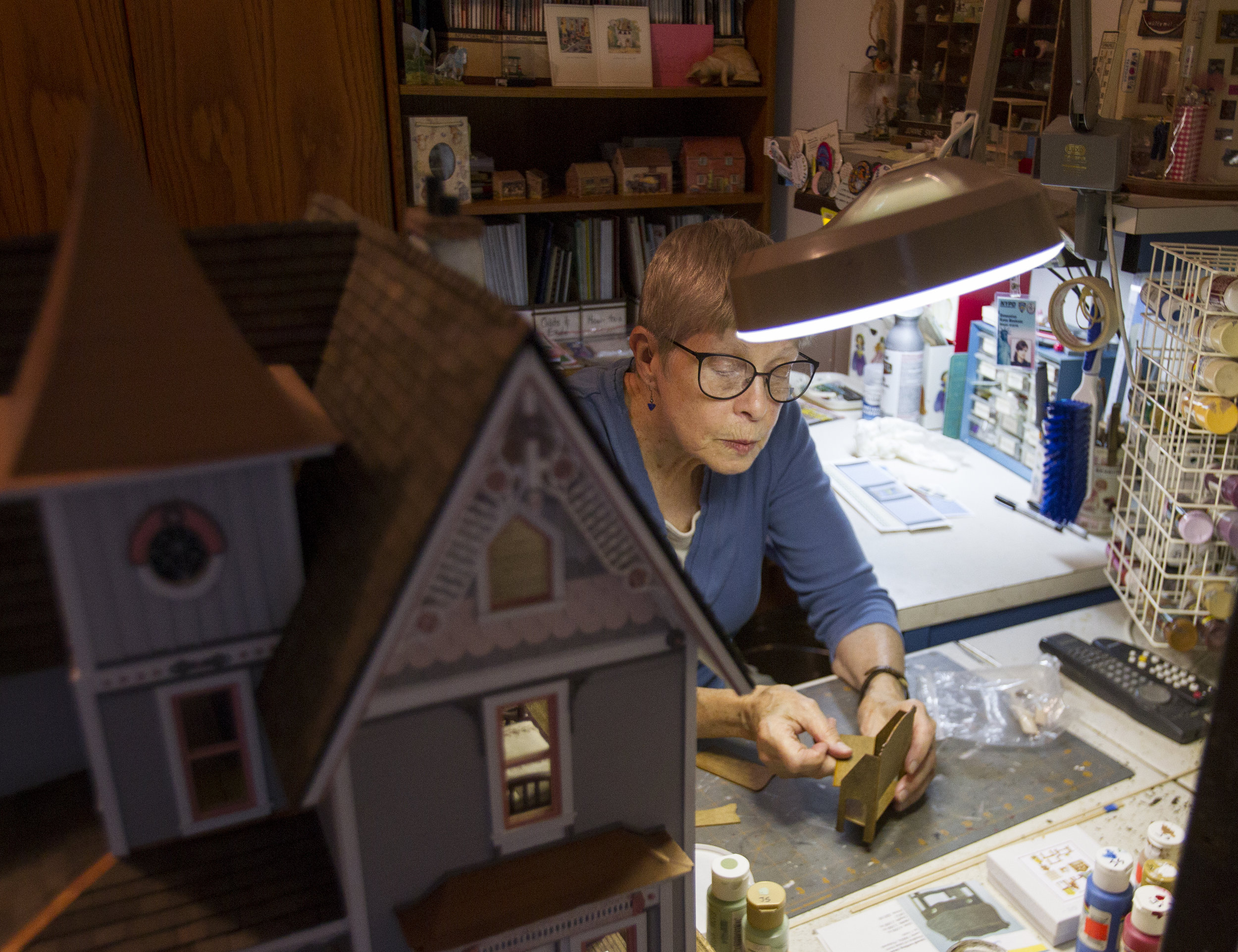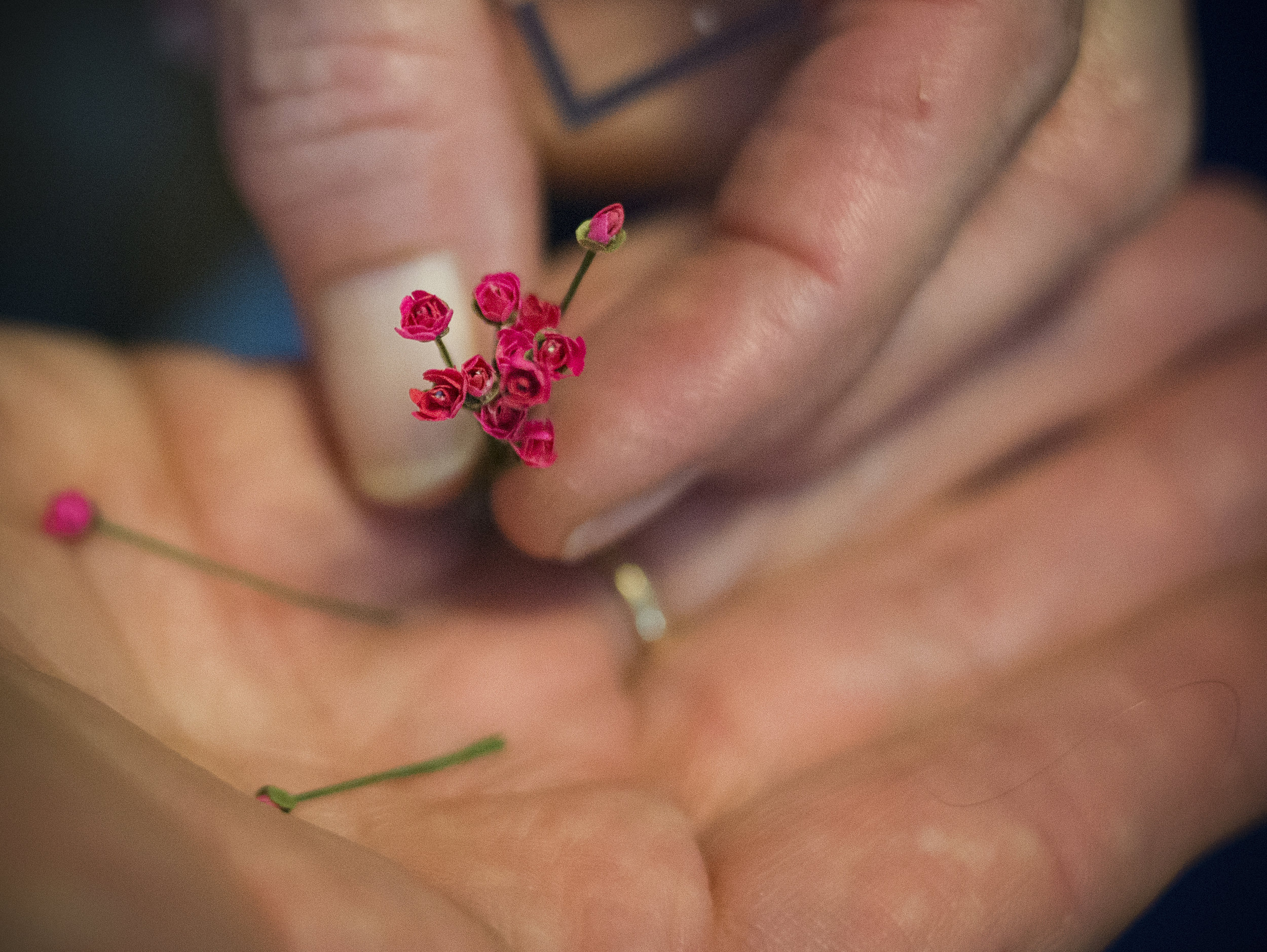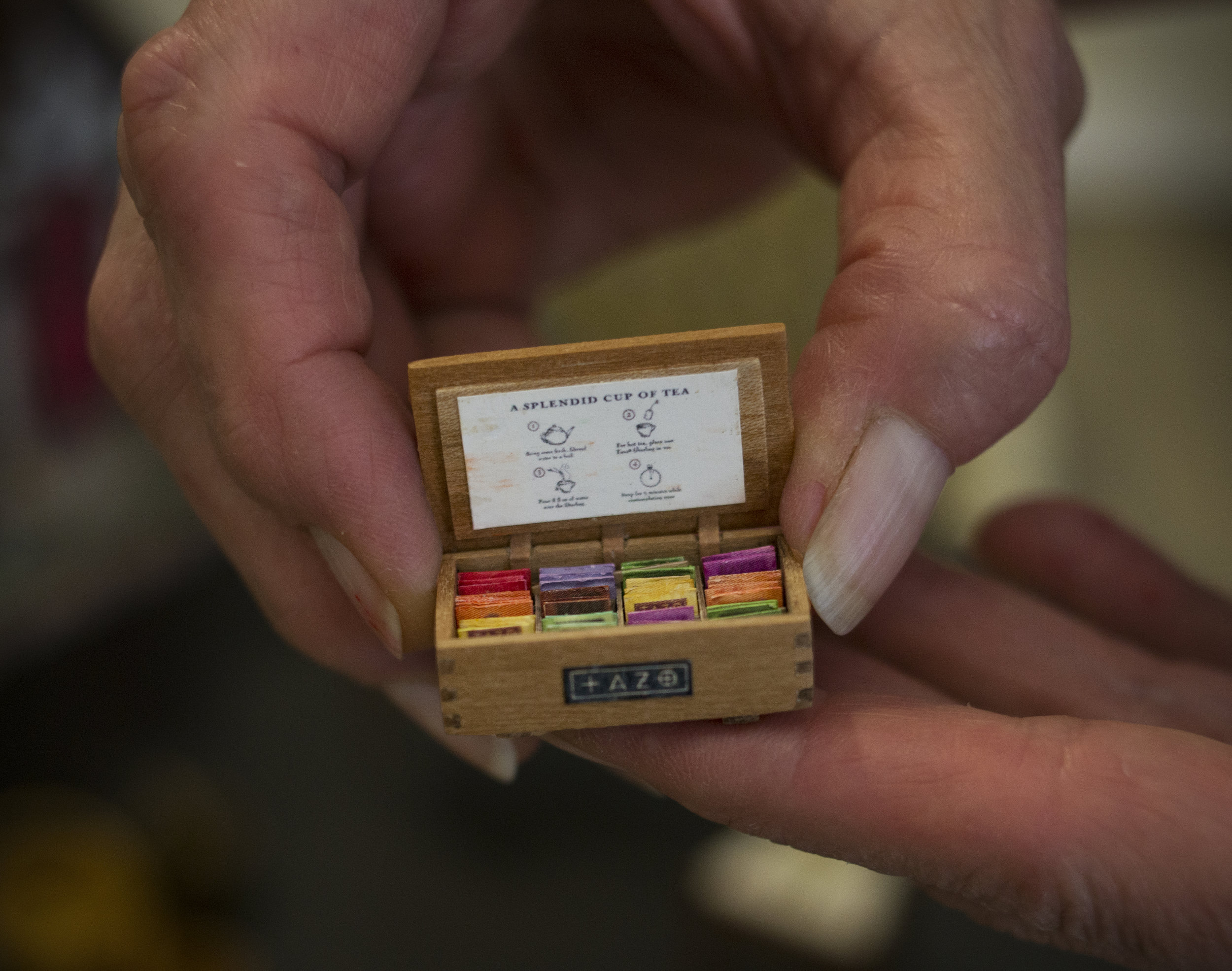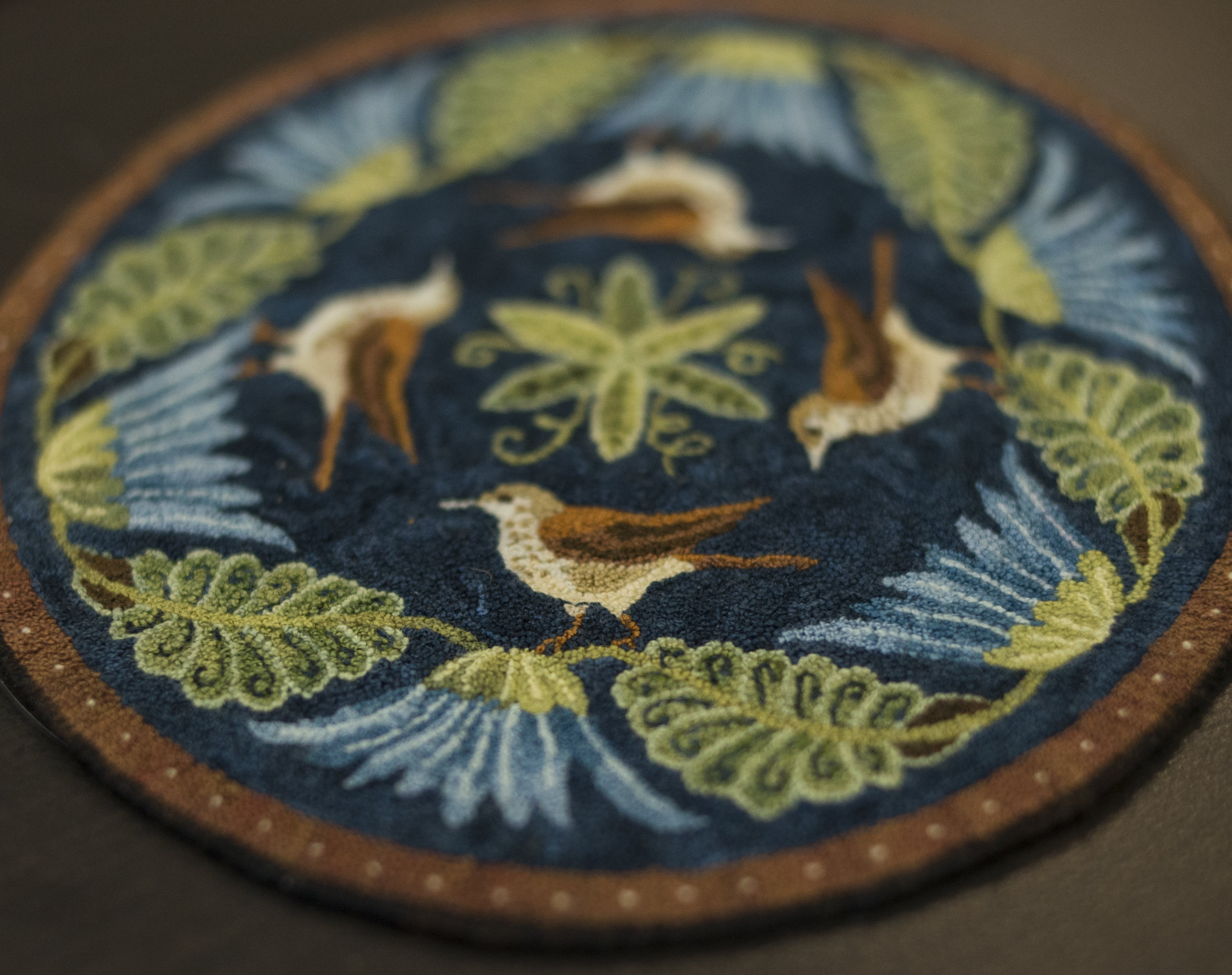One week the Eugene Minis Club members are architects, the next week they are water color painters, and the week after that they are woodworkers. “It’s like 20 or 30 hobbies rolled into one,” said EMC member Diane Scott of Mohawk Valley, Ore.
While the members are all remarkably talented and detail-oriented as miniaturists, many of them have a unique speciality or knack for a specific trade. Miniaturists is a term used to describe those who are extreme hobbyists/artists of crafting everything in miniature, from models of houses, to chairs, to books to just about everything a tiny model of something could require.
The EMC meets once a week on Thursdays and on the first Tuesday of every month to work on their miniature creations, share ideas, and learn new trades and techniques. There are about 12 members in the group, most of whom are retirees and have been working with some form of miniatures for decades.
Joyce Metcalf of Eugene, Ore. has been creating miniatures, as in miniature to scale models of everything from old-fashioned china shops to hat shops complete with a porcelain doll trying on her favorite headwear, for over twenty years. She began by making clothespin dolls, tiny to-scale dolls made out of clothespins, and eventually ventured into the other realms of the miniature world.
Metcalf’s clothespin doll work earned her acceptance into the International Guild of Miniature Artisans (IGMA), a group of dedicated miniature-artisans that was founded in 1979 that aims “to promote fine miniatures as an art form,” according to the website. The Guild is comprised of artisans who are extremely skilled in the art of miniaturists. Each year the Guild nominates members whose talents are exceptional to either become an Artisan member or a Fellow member. Metcalf is a Fellow member, which is the highest status level in the guild and is granted to “those Artisan members whose work develops into the epitome of excellence.”
The IGMA also runs a Guild School which is held annually at Maine Maritime Academy in Castine, Maine. At Guild School, Artisans and Fellows instruct courses on their forte, whether it be miniature foods, miniature pottery, or miniature furniture making. Two EMC members, Scott and Peggy Zorn attended a class on the latter at Guild School, which was instructed by Mark Murphy of Astoria, Ore. There is also silent auctions, evening seminars, and exhibits of work throughout the weeklong school event.
Metcalf has been a member of the Eugene Miniature Club for several years now and hosts the weekly and monthly meetings at Crescent Park Senior Living, where she currently resides.
The most current project that Metcalf is working as a part of the Eugene Minis Club is crafting a miniature chicken coop. Mary Jeans, another EMC member, cut all the main structural wood for the coops. Each member then creates their own vision with their coop, some, like Scott are going for an aged and distressed style, while Metcalf is going for the classic red-barn look. Some of the women even put their chicken coop on display at this year’s Portland Miniature Show which was from September 29th -October 1st, and several of them took home awards including Best in Show which went to Zorn for her wizard’s cottage miniature.
Scott, has been crafting all things miniature for roughly 30 years. According to the other members of the EMC, Scott is a maven of detail. She has taught several classes and taken several classes over the years for a variety of miniature projects, but her craftsmanship and finesse is her fine needlework of mini French-knot rugs. They vary slightly in size, ranging from the size of a matchbook to about the size of a postcard. Each rug can contain approximately 1,600 knots per square inch and can sell for up to $800 each. She has recently started selling rug kits she has put together for around $15, that she sells online or in person at expo’s or meetings, as a much more affordable alternative to purchasing one of her handmade French-knots. Scott has also earned a member status as an Artisan with the IGMA, as well as a variety of other miniature crafting awards including 3rd Place for 1-inch scale at this years Portland Miniature Show.
Miniaturism, or crafting everything to miniature scale, is commonly described as a hobby and can be as involved as making nearly every piece from scratch or collecting pieces from different makers over time. “It is as expensive and time-consuming as you want to make it,” said Scott.
The members often share their materials with one another and sometimes those materials are completely repurposed. At one meeting, Joanne Snyder of Eugene, Ore. brought tiny pieces of very thin 1 inch squares of lead from her dentist that were originally used for the x-ray machine. The women quickly turned these squares into hinges for their chicken coop doors as well as flashing for some of their chicken coop roofs. “The great thing about buying materials is that you only use a tiny amount,” said Scott. “So it really lasts forever.”
However, it is more than just a hobby for many of the members. “Diane is an artist,” said Nancy Gant. Gant herself is the creator of Simply Lampwork where she handmakes miniature glass figurines, colorful swirled-glass beads, and, of course, to-scale items for miniature work, which she sells at the Saturday Market. Depending on the piece, Gant’s work sells from about 24$ for a pair of lampwork peacock-shaped beads to a storybook glass bead which depicts a scene of a black moon and a mountain inspired by her love of The Adventures in Middle-Earth game for $125.
“You can find nearly everything from real life in miniature,” said Scott. “from both historical and current periods. In addition to meticulous craftsmanship, technology such as lasers and 3D printing is enabling the creation of accurate miniaturization, especially in smaller scales.”
There are three standard scales used by miniaturists to create their masterpieces. The most popular is 1-inch scale, meaning that something which is a 1 foot becomes 1” in size. For example, if someone is 6 feet tall in real life, their miniature figurine equivalent would be 6 inches tall in this scale. The next smallest is half scale, where 1 foot becomes 1/2 inch. Increasingly popular is quarter scale, where 1 foot becomes ¼ inch. There are also much smaller scales, like 1/48 inch and even 1/87 inch, which are more for dioramas or models of entire cities and towns.
Joanne Snyder, her husband Tom, and his sister Martha spent a majority of their lives dealing in the smaller scales as makers of dioramas for museums and historical sites all over the United States. They have dioramas in San Francisco, Ca., Oil City, Pennsylvania, and in the state courthouse in downtown Eugene, Ore.
Moments In Time Exhibits was the name of their studio which was based out of Eugene, Ore., and although they are now retired their work lives on as historically accurate to-scale models with an extra touch that was unique to their studio. Joanne and Tom would spend hours researching actual events that happened during the time period of each specific diorama, and then included those scenes in the model. At the time, no other diorama makers offered this service, according to Snyder. “It’s a way of storytelling,” said Snyder. “That way people can see what really happened there as opposed to just a model of an old building.”
For Sherrill Necessary, EMC member, miniatures are a way to tell not just stories, but to make creative tales of fiction. She has created adventures for her tiny “Fruity Girls” to go on, and has even printed out picture books with photos she has taken of the “Fruity Girls” on their adventures in her miniature models.
Like Snyder and Necessary the EMC members agree that it is another form of storytelling. “You remember specific pieces and where you got them or who gave them to you,” said Scott. “It’s just like a real home in that way.”

